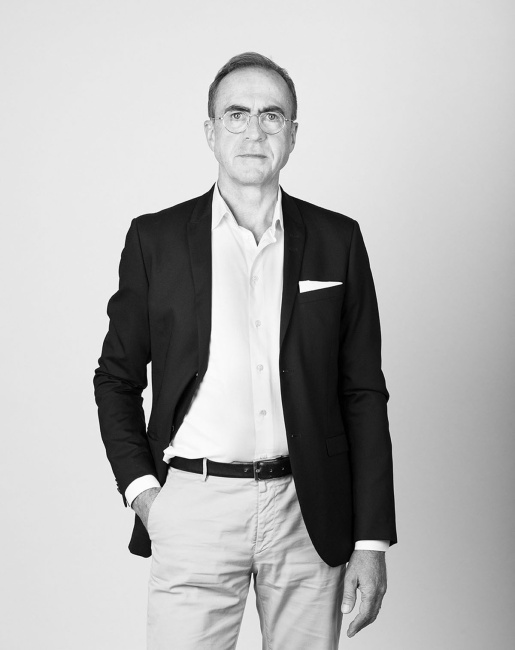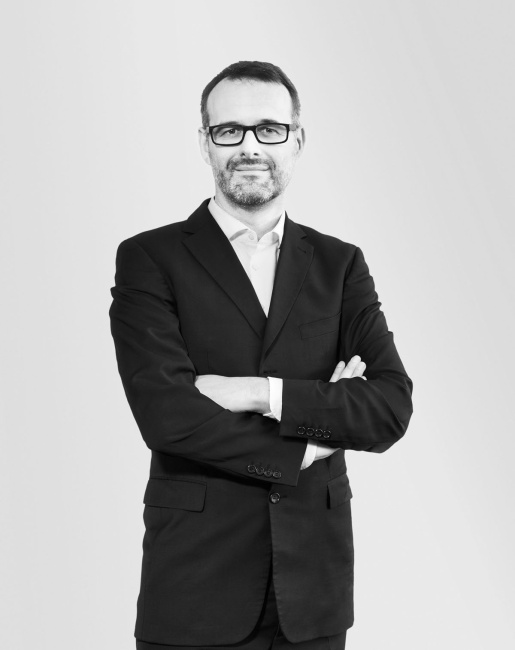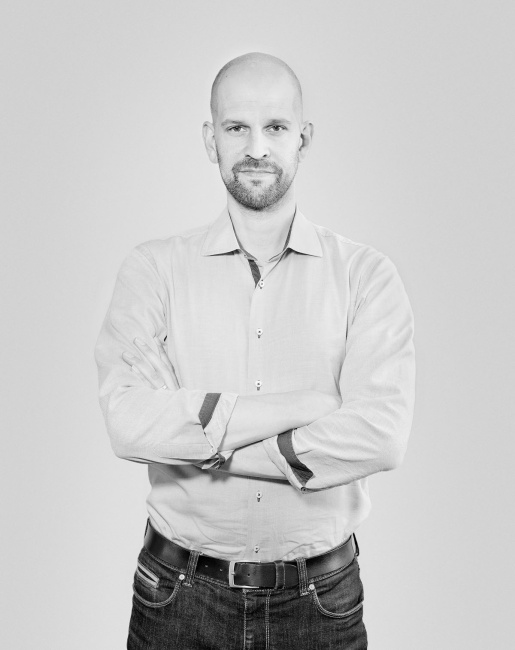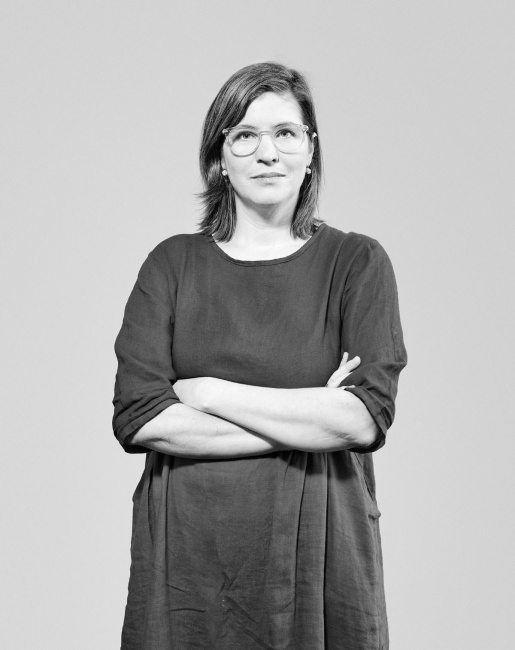Schöneberg: Lietzenburger Straße
gmp • Architekten von Gerkan, Marg und Partner
Bypass Road Becomes Urban Space
This new layout for Lietzenburger Strasse offers a variety of pedestrian paths and high-quality public space. Gaps along the street are to be filled with residential buildings. The ground floors will contain cafés, restaurants, workshops, medical practices and shops, inviting people to meander along the street and enjoy the green spaces planted in front of the buildings. The traffic lanes are broken up by diagonal crossings that form permeable squares. The geometric road surface has no thresholds, creating a shared environment for all road-users as well as spaces for people to move and rest. The trees, landscaping and public squares all contribute to this place that is dedicated to people, over traffic.
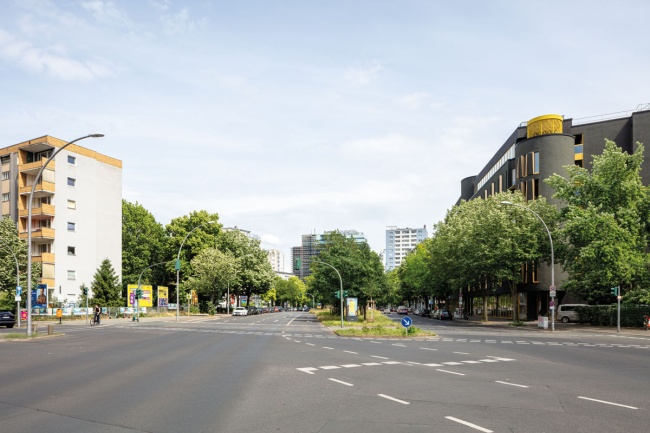
Existing street space
The destruction of the Second World War reduced much of Berlin to rubble-filled plots. Lietzenburger Strasse was laid diagonally through some of these plots as a “car-friendly southern tangent” to relieve traffic from Kurfürstendamm/Tauentzienstrasse. The green areas were previously contained in the centre of the road on an “island”, separated from the buildings by the wide asphalt lanes.

The car-oriented southern tangent in the northern part of Schöneberg acts as a divisive element in urban planning.
1 By increasing the urban density, the plan creates additional housing and public spaces, with new buildings and “community pavilions”.
2 In the future, urban areas will feature state-of-the-art mobility options, generous green spaces, and people-oriented lighting.
3 This shared public space will be created from interconnecting urban plazas and mobility hubs with integrated charging stations.
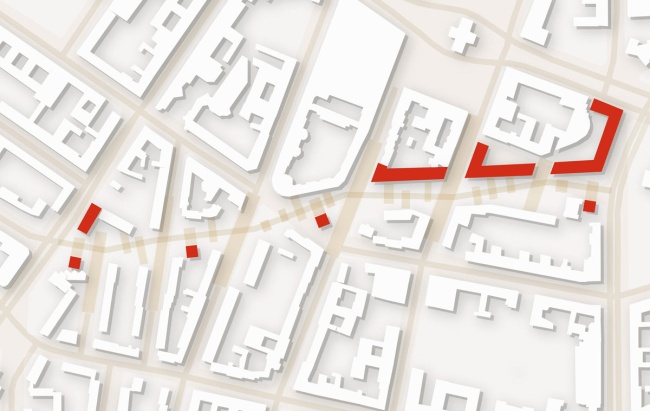
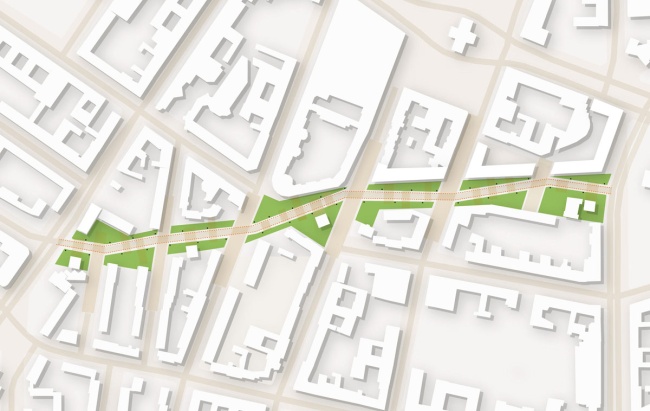
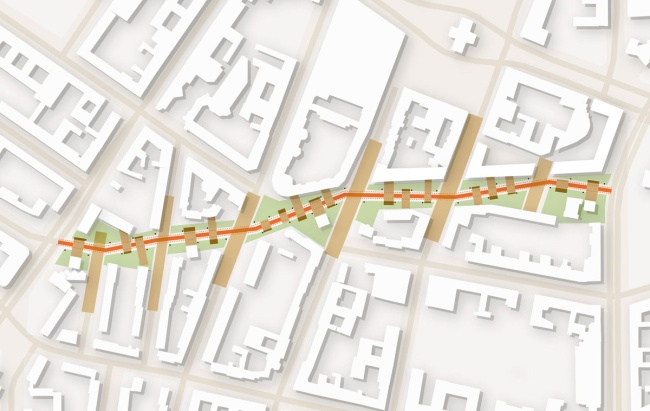
The existing streetscape
On this inhospitable road, four formidable lanes of motor traffic (bordered by two parking lanes) are an obstacle for both pedestrians and cyclists who wish to cross.
1 View from above: At the moment, Lietzenburger Strasse is a traffic corridor.
2 Lietzenburger Strasse was originally designed in keeping with the vision of the car-oriented city. Pedestrians are subordinate to vehicle traffic.
3 Green spaces form the central reservation and are seperated by a total of six lanes of traffic. They are therefore isolated from residents.
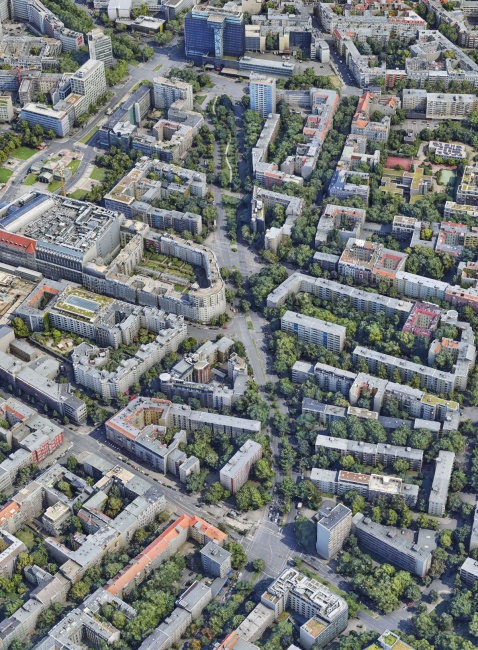
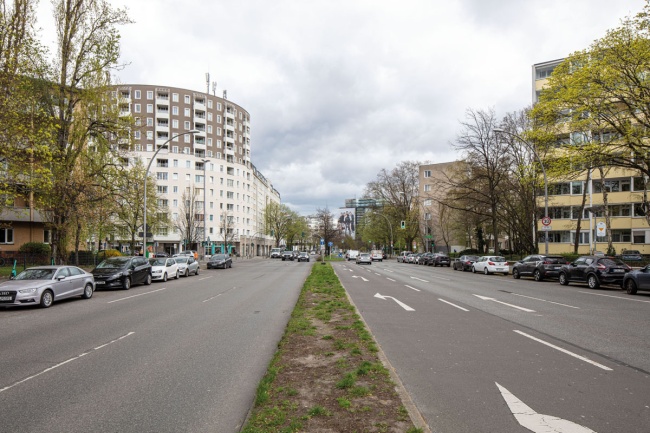

The Vision
The new layout will slow traffic by reducing it to two lanes with spacious cycle paths running along them and remove the central reservation. Short-term parking zones for different vehicles are positioned at suitable intervals for the likes of charging stations and deliveries.
1 In the future, Lietzenburger Strasse will be given structure by a series of landscaped squares.
2 This design is for a low-traffic urban area, with high-quality public space for residents.
3 This cross-section diagram of the road shows the expansion of planted areas and the interweaving pedestrian areas. The traffic lanes will be in the centre of the road.
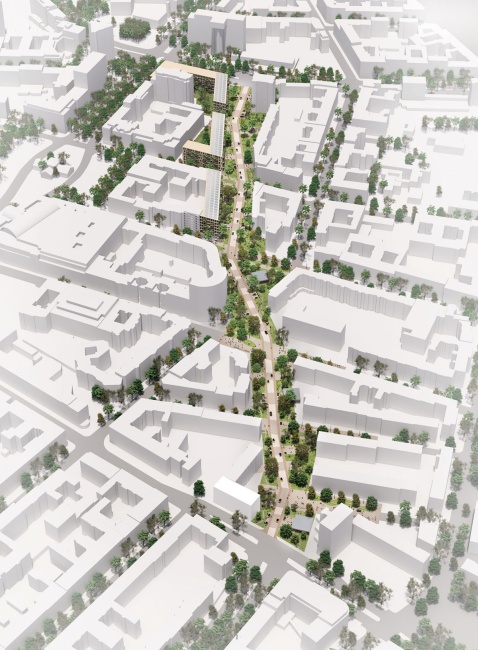
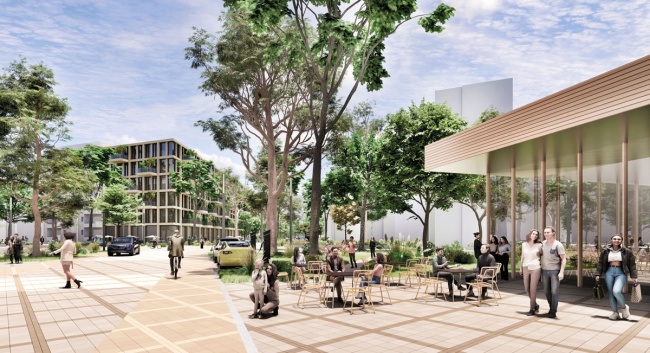

Fewer lanes, more greenery, more housing
The view of the future intersection of Lietzenburger Strasse/Ansbacher Strasse illustrates the benefits of human-centred urban planning.
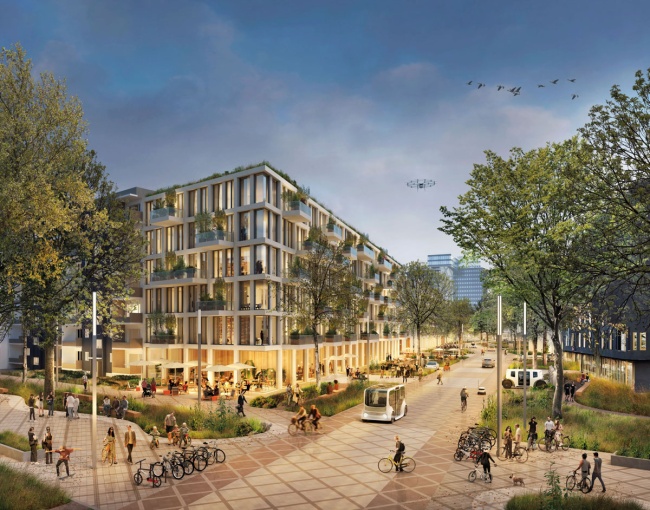
The team
Von Gerkan, Marg and Partners (gmp) is an architectural firm with offices in Berlin, Hamburg, Aachen, and four other locations worldwide. “Our work includes addressing global challenges and topics such as urbanisation, digitalization, and mobility, as well as climate-positive construction in accordance with certified standards and Bauen im Bestand.”
From left to right:
Hubert Nienhoff, Markus Pfisterer, Nikolai Reich, Sophie Altrock
© Annette Koroll und Katja Strempel
